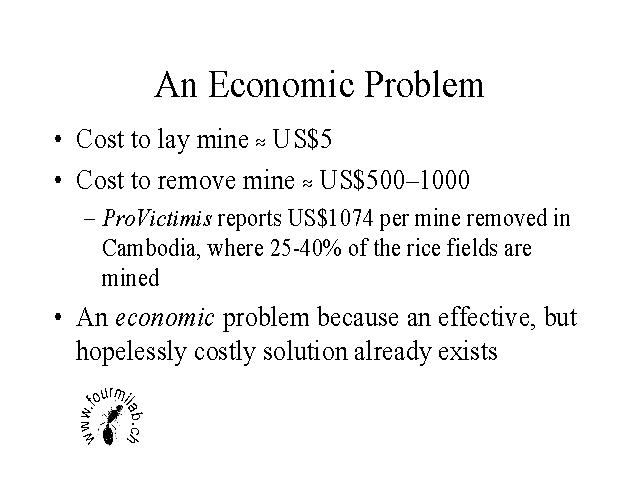

|
|
|
I believe that what we're faced with here is essentially an economic problem The cost to buy and lay a typical antipersonnel blast mine is on the order of US$5. The cost to remove a mine is on the order of 500 to 1000 dollars; hard data from Cambodia comes in at the high end of this range since many mines are submerged in rice paddies.
As long as this disparity in cost obtains, the balance remains in favour of the mine layer rather than the mine remover, and the only way to reverse the inexorable growth in the number of mines in the ground is to bring down clearance cost to something close to the cost of laying a mine, as we try to push up the cost of mine laying through arms control regimes.
This might seem impossible, but what's a factor of 100 or 200 to people who have lived through six orders of magnitude cost reductions in our own industry, and who, for the most part, expect it to continue as almost a law of nature? When I first started thinking about the land mine problem, I realised that what we really needed was to find a way to unleash Moore's Law in the minefield and let technology take its course. I hope one or more ideas that spring from folks here will bring that goal closer to reality.
But first, let's look at the state of the art. It is possible, today, to clear 100% of the land mines in arbitrary terrain with little or no risk to those performing the clearance.